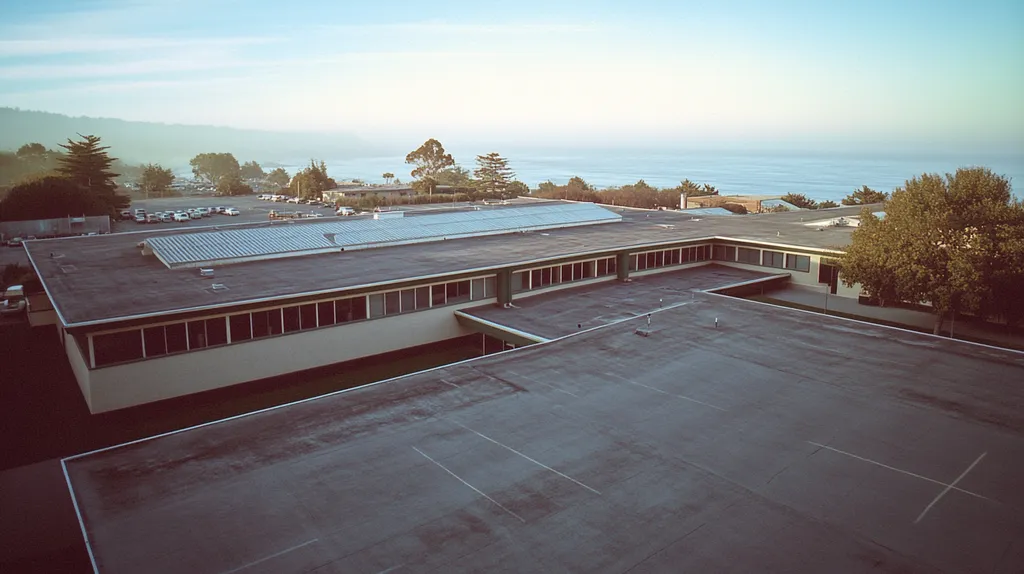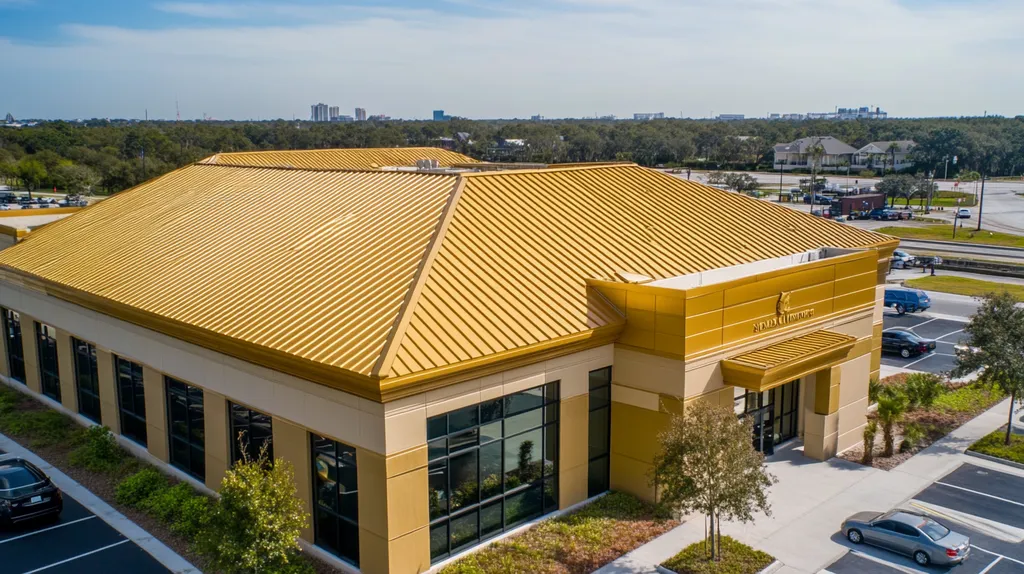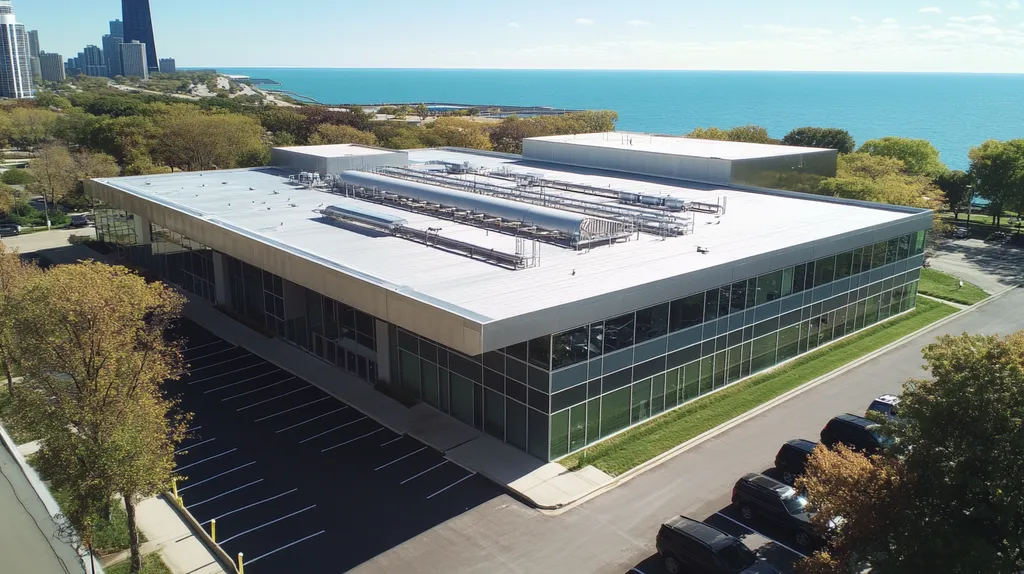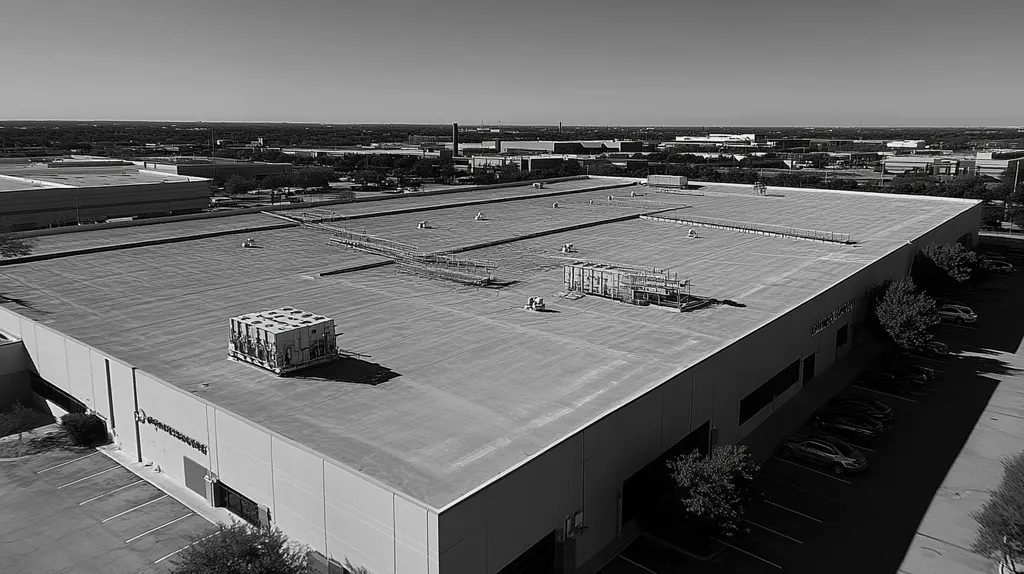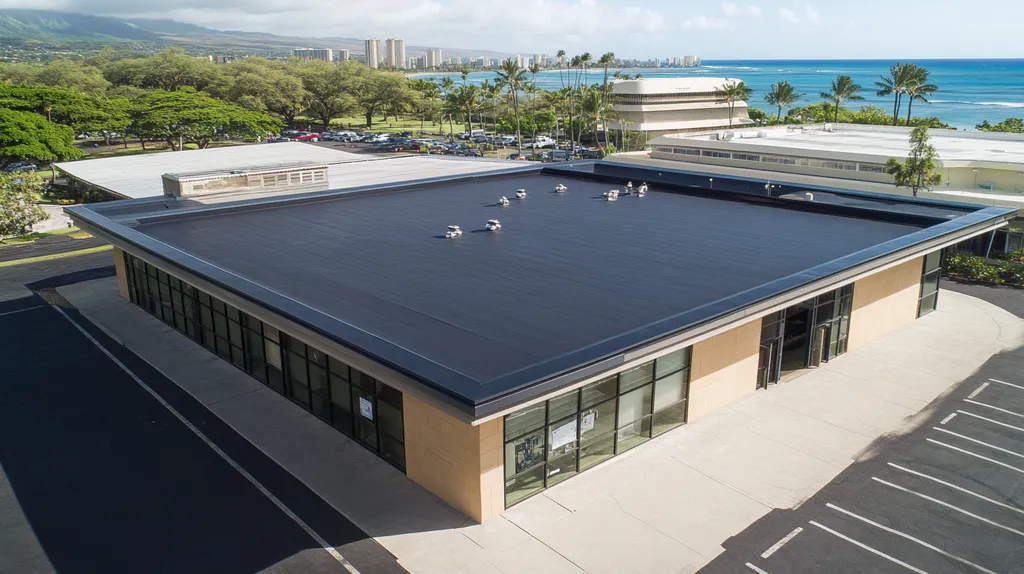Welcome to today’s Battle Royale featuring two roofing heavyweights: “Polyurethane Coatings” in the east corner versus “Silicone Coatings” in the west!
Tonight’s showdown pits these contenders against each other across six punishing rounds designed to test every aspect of their performance for Impact of Coatings on Industrial Roof Lifespan.
At stake? Millions in potential costs, decades of building protection, and the critical performance demands of modern commercial and industrial facilities.
Our professional judging panel will evaluate each round on technical merit, real-world performance, and value delivery. After all six rounds, we’ll declare our ultimate champion.
Ladies and gentlemen, facility managers and building owners… it’s time to rumble!
ROUND 1: INITIAL COSTS & INSTALLATION
In industrial roofing, coating selection directly impacts both immediate costs and long-term facility operations. Poor choices in materials or application methods can reduce roof performance by up to 40% and lead to premature system failure. Understanding the key differences between polyurethane and silicone coatings is crucial for making informed investment decisions.
Let’s examine three critical factors that influence total project cost and success: material expenses, installation complexity, and project timeline considerations.
Material Expenses
Coating thickness significantly impacts both cost and longevity, with proper mil thickness being crucial for warranty coverage. A 20-mil thickness typically provides 10 years of service, while a 30-mil application can extend protection to 20 years. (source: West Roofing Systems)
Polyurethane coatings generally command premium pricing, ranging from $2.50 to $4.00 per square foot for materials alone. This higher cost reflects their advanced chemical composition and enhanced durability characteristics.
Silicone coatings offer more competitive initial pricing, typically between $1.75 and $3.00 per square foot. Their single-coat application often requires less material overall, contributing to lower material costs.
ADVANTAGE: SILICONE COATINGS
Installation Complexity
Polyurethane installations require strict environmental controls and multiple application layers. Each layer needs specific temperature and humidity conditions, making the process more complex and weather-dependent.
These coatings demand careful surface preparation and primer application. The multi-coat process requires precise timing between layers to achieve proper adhesion and curing.
Silicone coatings typically require minimal surface preparation and can be applied in a single coat. They demonstrate better tolerance to varying weather conditions and don’t usually require primers.
ADVANTAGE: SILICONE COATINGS
Project Timeline
Polyurethane coating projects typically span 3-5 days due to multiple application layers and curing requirements. This extended timeline increases labor costs and facility disruption.
Weather delays can significantly impact polyurethane installation schedules. Each coating layer requires specific conditions, potentially extending project completion by days or weeks.
Silicone coating applications usually complete within 1-2 days. Their single-coat application and faster curing time minimize facility disruption and reduce labor requirements.
ADVANTAGE: SILICONE COATINGS
ROUND 1 WINNER: SILICONE COATINGS
ROUND 2: DURABILITY & LIFESPAN
Roofing system longevity directly impacts facility operating costs and asset value. Poor coating choices can reduce roof performance by up to 50% and lead to premature system replacement, costing facilities millions in repairs and disruption.
Understanding how coating selection affects durability enables property owners to maximize their roofing investment while minimizing maintenance expenses over time. Let’s examine three key factors that determine coating performance and lifespan.
Resistance to Weathering and UV Degradation
Polyurethane coatings excel at UV resistance, maintaining their protective properties and physical characteristics even after decades of sun exposure. Their multi-layer composition creates a dense barrier that prevents degradation from solar radiation and extreme temperature cycles.
These coatings demonstrate exceptional color stability and chalk resistance, helping maintain the roof’s reflective properties. Their ability to resist brittleness and cracking under UV exposure extends roof membrane life significantly.
Silicone coatings provide good UV protection but can experience gradual erosion over time. While they maintain excellent waterproofing capabilities, their physical properties may degrade faster than polyurethane when exposed to intense sunlight.
ADVANTAGE: POLYURETHANE COATINGS
Impact and Chemical Resistance
Polyurethane coatings create an extremely durable surface that resists impacts, abrasion, and chemical exposure. Their cross-linked structure provides superior resistance to oils, solvents, and industrial pollutants common in manufacturing environments.
The high tensile strength of polyurethane allows it to withstand foot traffic and mechanical equipment without damage. This durability reduces the need for repairs from routine maintenance activities.
Silicone coatings offer excellent chemical resistance but can be more susceptible to physical damage. Their softer composition may show wear patterns in high-traffic areas and require more frequent touch-ups around mechanical equipment.
ADVANTAGE: POLYURETHANE COATINGS
Maintenance Requirements
Polyurethane coatings typically require recoating every 15-20 years to maintain optimal performance. Their multi-layer system demands careful inspection and may need spot repairs if damaged.
Regular cleaning and periodic recoating help maintain polyurethane’s protective properties. However, repairs can be complex due to the need for proper surface preparation and coating compatibility.
Silicone coatings generally need less frequent maintenance, with recoating intervals of 20+ years. Their single-layer application simplifies repairs, and their self-cleaning properties reduce routine maintenance requirements.
ADVANTAGE: SILICONE COATINGS
ROUND 2 WINNER: POLYURETHANE COATINGS
ROUND 3: PERFORMANCE FACTORS
The performance of industrial roofing coatings directly impacts facility protection and operational costs. Studies show that up to 80% of commercial roofs require premature replacement due to inadequate coating protection. The right coating choice can extend roof life by 15-20 years, while poor selections often lead to system failure within 5-7 years.
Durability Against Weather Elements
The primary advantage of applying a roof coating is its ability to protect against harsh environmental conditions. When properly selected and applied, protective coatings can significantly extend a roof’s service life by creating a defensive barrier against UV radiation, precipitation, and temperature fluctuations. (source: Carey Roofing Corporation)
Polyurethane coatings demonstrate exceptional resistance to UV exposure and thermal cycling. Their dense molecular structure creates a robust barrier that maintains its protective properties even after decades of weathering.
Silicone coatings excel at water resistance and perform well in ponding conditions. However, they can experience faster degradation from prolonged UV exposure compared to polyurethane options.
ADVANTAGE: POLYURETHANE COATINGS
Impact on Energy Efficiency
Energy efficiency significantly influences both environmental impact and operational costs. Coating selection can affect building temperature regulation and HVAC system performance throughout the year.
Polyurethane coatings typically demonstrate lower reflectivity rates, which can increase cooling costs during warm seasons. Their thermal properties may benefit facilities in colder climates but can burden cooling systems in warmer regions.
Silicone coatings offer superior reflective properties, reducing roof surface temperatures by up to 50 degrees Fahrenheit. This temperature reduction translates to lower cooling costs and improved building energy efficiency.
ADVANTAGE: SILICONE COATINGS
Maintenance Requirements
Long-term maintenance needs directly impact facility operating costs and staff resources. Different coating types require varying levels of inspection, cleaning, and repair to maintain their protective properties.
Polyurethane coatings demand regular inspections and periodic recoating to maintain their protective qualities. Their multi-layer system requires specialized knowledge for repairs and maintenance.
Silicone coatings feature simpler maintenance protocols and longer intervals between recoating requirements. Their single-layer application simplifies repairs and reduces ongoing maintenance costs.
ADVANTAGE: SILICONE COATINGS
ROUND 3 WINNER: SILICONE COATINGS
ROUND 4: MAINTENANCE REQUIREMENTS
Maintenance requirements can make or break an industrial roofing investment. Studies show that improper maintenance leads to 70% of commercial roof failures before reaching half their expected lifespan. The wrong coating choice can triple maintenance costs over a 10-year period, while the right selection can reduce maintenance needs by up to 60%.
Inspection and Cleaning Protocols
Polyurethane coatings demand rigorous inspection schedules, typically requiring quarterly professional assessments. Their complex multi-layer structure means even minor damage can compromise the entire system if left unchecked.
These coatings need careful cleaning with specific chemical solutions to prevent degradation. High-pressure washing must be avoided as it can damage the coating’s surface integrity.
Silicone coatings feature self-cleaning properties that reduce maintenance frequency to semi-annual inspections. Their single-layer structure simplifies visual inspections and allows for standard cleaning methods without risking coating damage.
ADVANTAGE: SILICONE COATINGS
Repair Procedures
Polyurethane coating repairs require extensive surface preparation and careful material matching. The multi-layer system demands precise application techniques and specific environmental conditions for proper adhesion.
Repair areas often need complete removal and reapplication of all layers to maintain system integrity. This complexity increases both repair time and costs.
Silicone coatings allow for simple spot repairs with excellent adhesion to existing material. Their single-layer structure enables quick patches that fully integrate with the original coating, reducing facility downtime.
ADVANTAGE: SILICONE COATINGS
Long-term Maintenance Costs
The primary advantage of applying a roof coating is its ability to extend service life through proper maintenance. When maintained correctly, these protective systems can significantly delay costly replacements and reduce overall facility expenses. (source: Carey Roofing Corporation)
Polyurethane systems typically require recoating every 7-10 years to maintain optimal performance. Their complex maintenance needs and specialized repair requirements result in higher long-term costs.
Silicone coatings generally need recoating only every 15-20 years. Their simpler maintenance protocols and durability translate to lower lifetime maintenance expenses.
ADVANTAGE: SILICONE COATINGS
ROUND 4 WINNER: SILICONE COATINGS
ROUND 5: SUSTAINABILITY CREDENTIALS
Environmental impact has become a critical factor in industrial roofing decisions, with coating choices directly affecting both facility sustainability and regulatory compliance. Studies show that poor coating selections can increase energy costs by up to 30% and generate significant waste during installation and maintenance cycles.
Understanding the environmental implications of different coating systems helps facility managers balance performance requirements with sustainability goals while avoiding costly regulatory issues.
Environmental Impact During Installation
Polyurethane coating installations generate significant waste due to their multi-layer application process. Their complex chemical composition requires careful disposal of excess materials and containers, increasing the project’s environmental footprint.
These systems often require specialized primers and multiple coating layers, leading to more packaging waste and potential material loss. The need for specific temperature and humidity conditions can also result in additional energy consumption during installation.
Silicone coatings produce minimal waste due to their single-layer application process. Their simpler chemical composition and reduced packaging requirements result in a smaller environmental impact during installation.
ADVANTAGE: SILICONE COATINGS
Energy Efficiency Performance
Polyurethane coatings offer moderate reflective properties but may degrade over time, reducing their energy-saving potential. Their thermal performance varies significantly based on color and finish choices.
These systems typically achieve lower solar reflectance index (SRI) values compared to alternatives. This limitation can impact building cooling costs and contribute to urban heat island effects.
Silicone coatings maintain superior reflectivity throughout their service life, reducing cooling loads and energy consumption. Their stable chemical structure resists degradation, ensuring consistent energy performance over time.
ADVANTAGE: SILICONE COATINGS
Environmental Compliance
Polyurethane coatings often contain higher levels of volatile organic compounds (VOCs), requiring careful monitoring during application. Their chemical composition may trigger additional regulatory requirements in environmentally sensitive areas.
These systems frequently need specialized handling and disposal procedures for maintenance and repairs. Compliance with environmental regulations can add complexity to ongoing maintenance operations.
Silicone coatings typically contain lower VOC levels and require fewer special handling procedures. Their simpler chemical makeup generally aligns better with current and emerging environmental regulations.
ADVANTAGE: SILICONE COATINGS
ROUND 5 WINNER: SILICONE COATINGS
ROUND 6: SPECIALIZED APPLICATIONS
Industrial roof coatings face unique challenges in specialized applications, where standard solutions often fall short. Studies indicate that up to 40% of coating failures in specialized industrial settings occur due to mismatched coating properties with specific facility requirements.
Understanding performance characteristics in demanding environments is crucial for making informed coating decisions. The right choice can extend roof life by decades, while the wrong selection may lead to premature system failure within months.
Chemical Resistance Standards
The quality of chemical resistance directly impacts coating longevity in industrial environments. Different coating materials offer varying levels of protection against chemical exposure, making proper selection crucial for long-term performance. (source: A1 Roofing’s Kangaroof)
Polyurethane coatings demonstrate superior resistance to harsh chemicals, acids, and industrial pollutants. Their cross-linked molecular structure creates an impermeable barrier that maintains integrity even under prolonged chemical exposure.
Silicone coatings offer moderate chemical resistance but can degrade when exposed to certain solvents and petroleum-based substances. Their performance in aggressive chemical environments may require more frequent maintenance and replacement.
ADVANTAGE: POLYURETHANE COATINGS
Temperature Extremes
Industrial facilities often experience extreme temperature fluctuations that can stress coating systems. Manufacturing processes, climate conditions, and equipment heat output create challenging thermal environments.
Polyurethane coatings maintain structural integrity across a wide temperature range (-50°F to 200°F). Their flexibility allows for thermal expansion and contraction without compromising protective properties.
Silicone coatings show good performance in moderate temperatures but can become brittle in extreme cold or soften excessively in high heat. This characteristic limits their effectiveness in facilities with severe temperature variations.
ADVANTAGE: POLYURETHANE COATINGS
Surface Preparation Requirements
Proper surface preparation significantly impacts coating adhesion and long-term performance. Industrial environments often present challenging substrate conditions that affect installation success.
Polyurethane coatings demand extensive surface preparation, including thorough cleaning, priming, and precise moisture control. This rigorous preparation process increases installation time but ensures optimal adhesion.
Silicone coatings require minimal surface preparation and can adhere to most substrates without extensive conditioning. Their forgiving nature allows for successful application even in less-than-ideal conditions.
ADVANTAGE: SILICONE COATINGS
ROUND 6 WINNER: POLYURETHANE COATINGS
AND THE WINNER IS…
After six grueling rounds of technical evaluation, we have our verdict…
In a split decision that went the distance, SILICONE COATINGS claims victory with four rounds to polyurethane’s two! This champion demonstrated superior performance in installation ease, maintenance requirements, sustainability, and cost-effectiveness.
Silicone’s knockout combination of single-coat application, minimal maintenance needs, and impressive energy efficiency credentials proved too powerful for its opponent to overcome. Its self-cleaning properties and extended recoating intervals delivered a devastating blow to lifetime operating costs.
However, don’t count polyurethane out completely! In specialized industrial environments facing extreme chemical exposure or severe temperature fluctuations, this contender still packs a powerful punch. Its superior chemical resistance and thermal stability make it the go-to choice for facilities with demanding environmental conditions.
Remember, ladies and gentlemen: Every building brings its own unique challenges to the ring. Local climate conditions, substrate characteristics, and specific facility requirements can all influence coating performance. While tonight’s bout provides valuable insights, property owners should always consult qualified roofing professionals who can evaluate their specific situation.
In the high-stakes world of industrial roofing, victory doesn’t just come from picking the popular champion – it comes from matching your facility’s unique requirements with the right contender’s strengths. Choose wisely, and may your roof reign supreme!
FREQUENTLY ASKED QUESTIONS
Q. What are the initial costs for commercial roof coatings?
A. The initial costs for commercial roof coatings vary between polyurethane and silicone. Polyurethane typically costs $2.50 to $4.00 per square foot, while silicone costs between $1.75 and $3.00 per square foot. Choose coatings wisely, since higher quality materials can affect longevity and performance over time.
Q. How do polyurethane and silicone coatings affect industrial roof lifespan?
A. Polyurethane coatings generally offer better UV resistance and impact durability, contributing to longer roof lifespans. On the other hand, silicone coatings require less maintenance and have extended recoating intervals, which can also enhance longevity. Both play critical roles in maximizing the life of an industrial roof.
Q. What performance factors should I consider for an industrial roof?
A. Important performance factors include durability against weather elements, energy efficiency, and maintenance requirements. Polyurethane coatings excel in weather resistance, while silicone coatings shine in reflecting heat. Evaluate these aspects to ensure optimal protection and operational cost savings.
Q. What are typical maintenance requirements for commercial roof coatings?
A. Maintenance requirements vary between polyurethane and silicone coatings. Polyurethane may need recoating every 7-10 years, while silicone coatings generally require recoating every 15-20 years. Regular inspections and proper cleaning will help prolong the lifespan of both coating types.
Q. How do environmental factors influence coating choices for industrial roofs?
A. The environmental impact involves waste generation, energy efficiency, and compliance with regulations. Silicone coatings produce minimal waste and have lower volatile organic compounds, making them favorable for sustainability goals. Polyurethane coatings, while durable, may necessitate more stringent handling procedures.
Q. Can I use commercial roof coatings in specialized applications?
A. Yes, but specialized applications demand coatings with specific performance characteristics. Polyurethane coatings often provide superior chemical resistance and thermal stability, ideal for harsh industrial environments. Ensure you assess compatibility with facility requirements to prevent premature failure.
Q. What should I know about the longevity of commercial roof coatings?
A. The longevity of coating systems can significantly impact overall maintenance costs and asset value. Properly maintained polyurethane coatings last around 15-20 years, while silicone coatings can exceed 20 years. Choosing the right type and performing regular maintenance will enhance service life.

